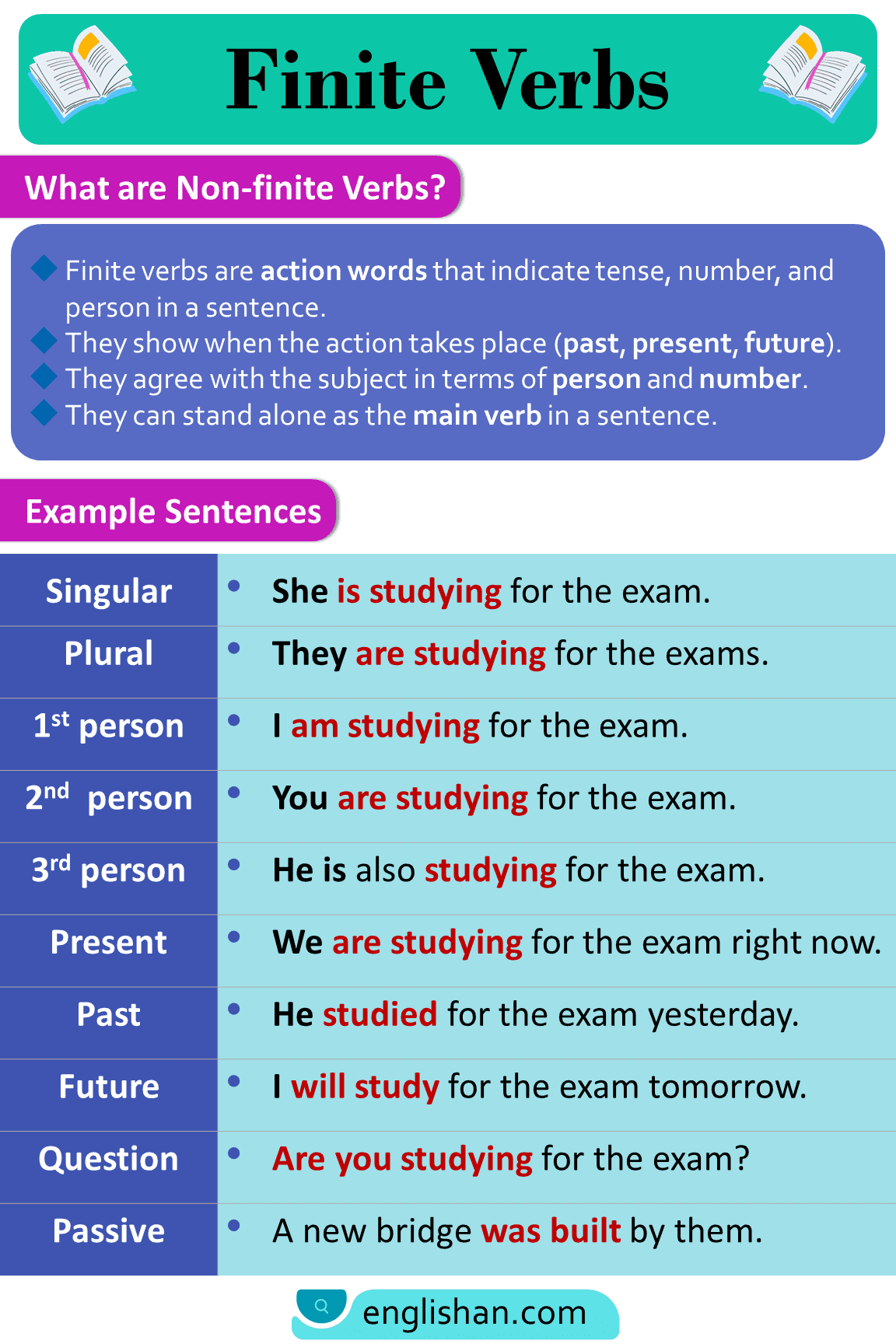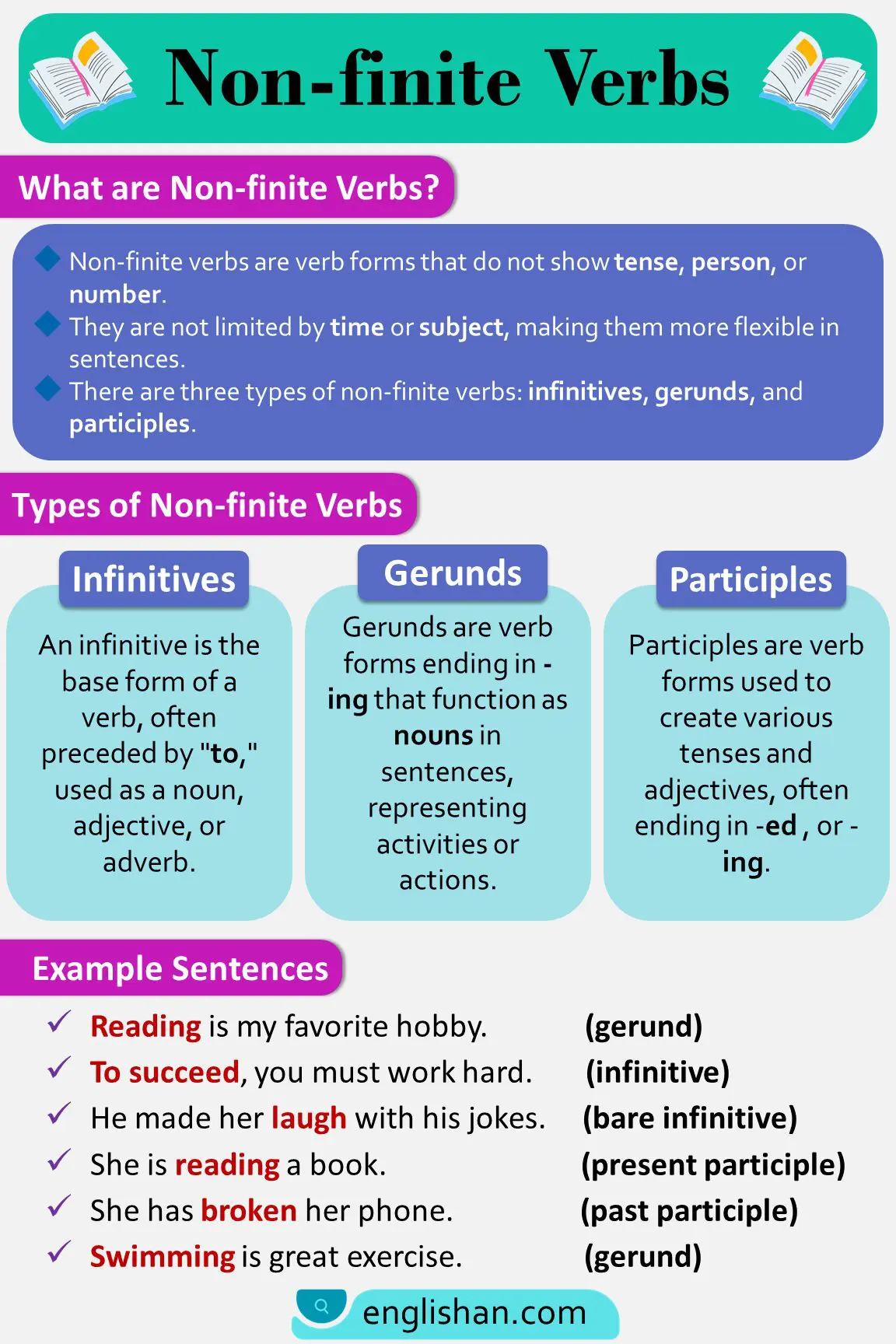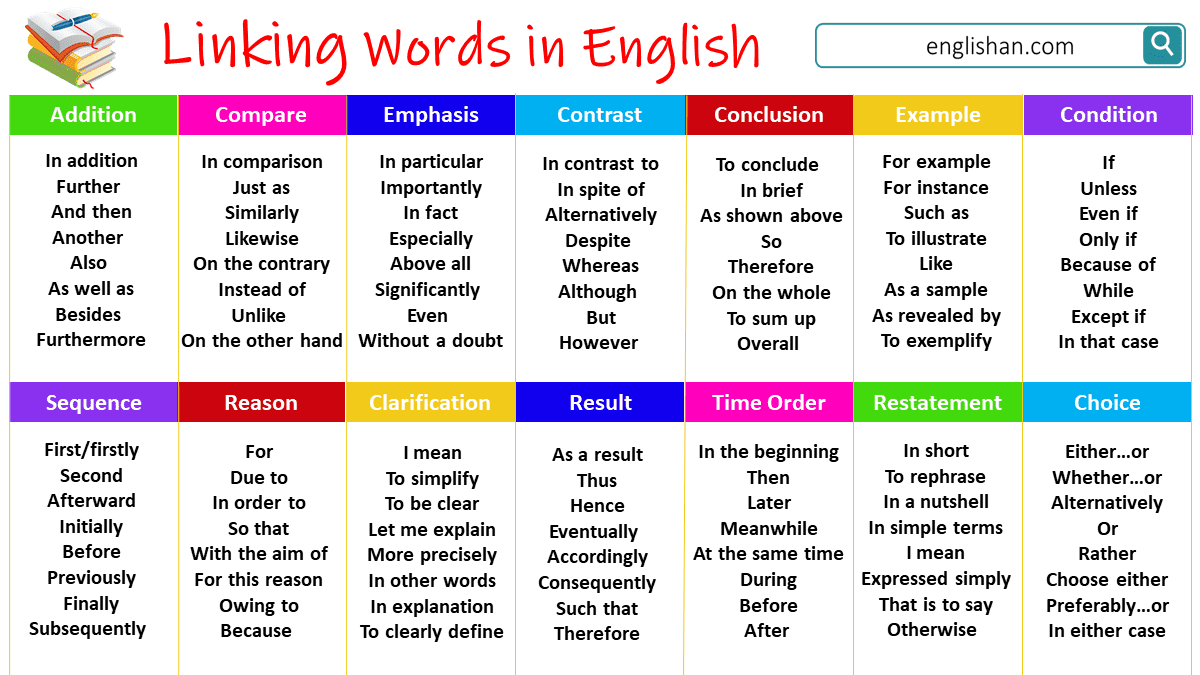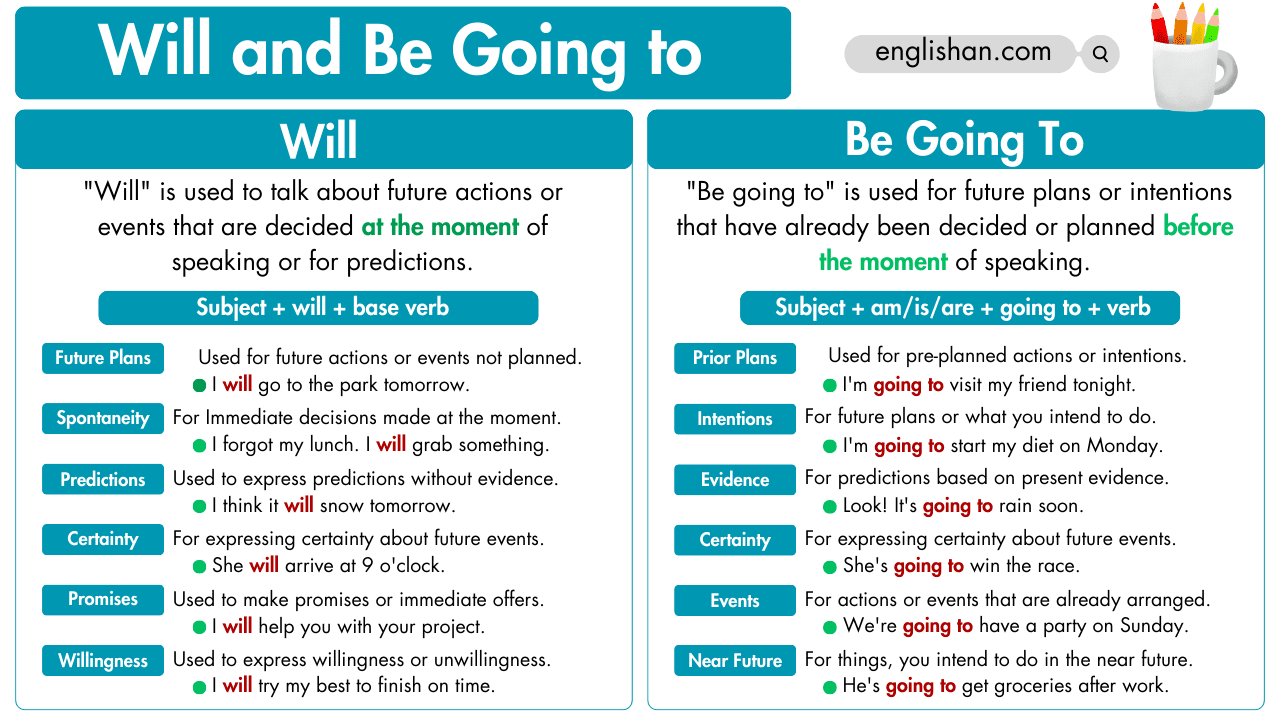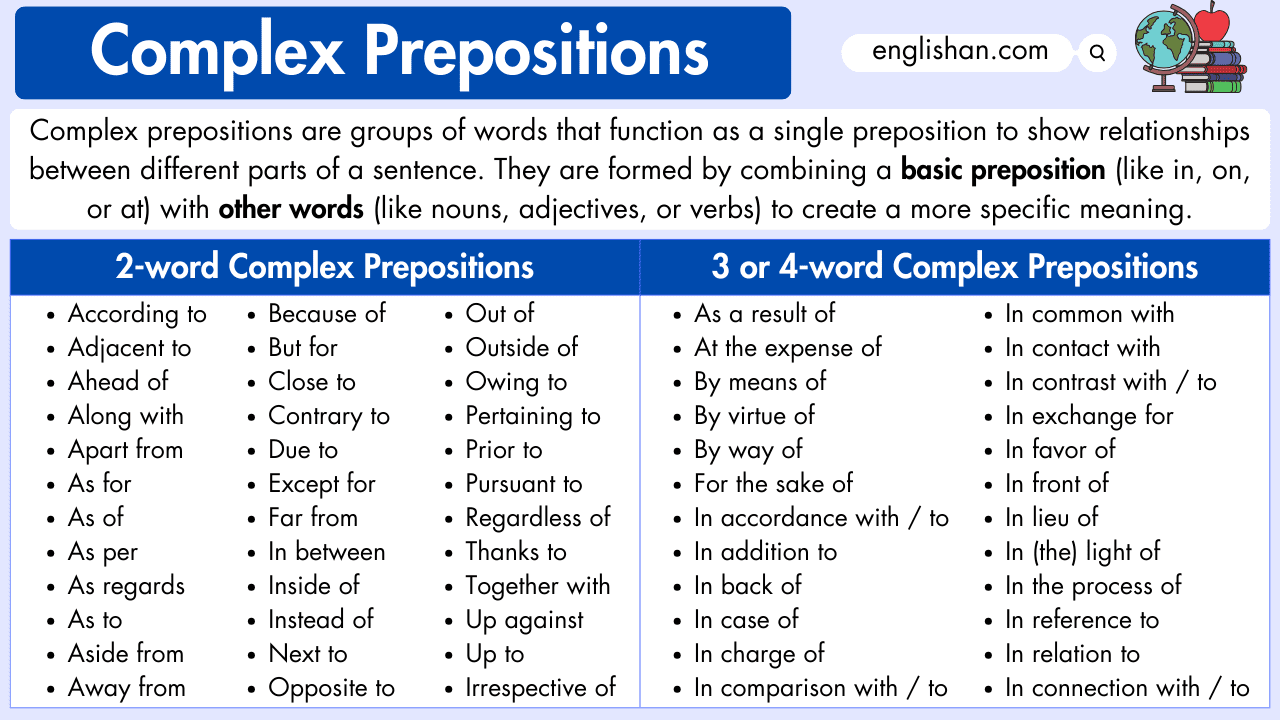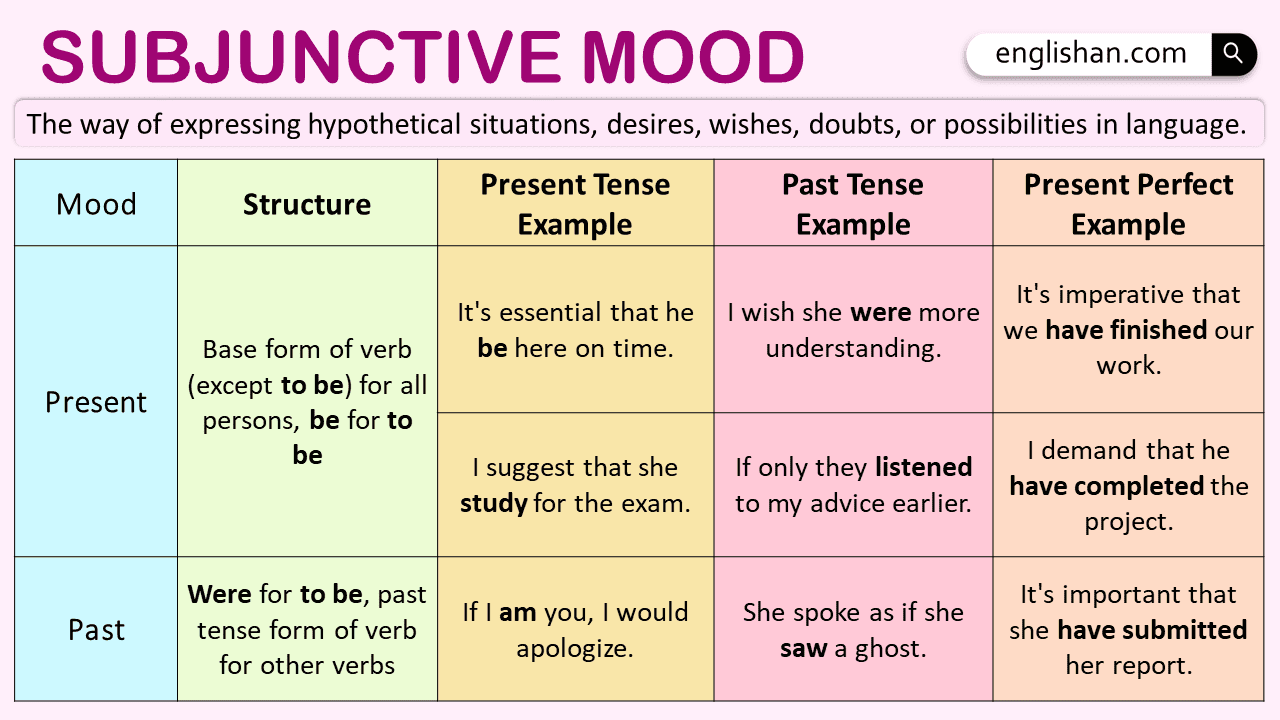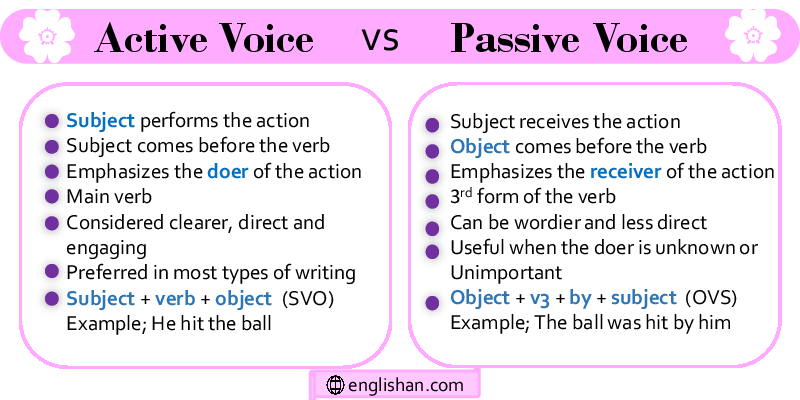Contents
In English grammar, verbs are classified into two main categories: finite verbs and nonfinite verbs. These two types of verbs serve different purposes in sentences and have distinct characteristics. Learning the difference between finite and nonfinite verbs helps you understand how to form sentences accurately and improve your fluency in English.
In this article, we will explain what finite verbs and nonfinite verbs are, how they function in sentences, and provide clear examples for each.
What Are Finite Verbs?
A finite verb is a verb that has a specific tense, agrees with the subject in number (singular or plural), and shows whether the action takes place in the past, present, or future. Finite verbs can stand alone as the main verb in a sentence and help form complete ideas.
For example:
- She runs every morning.
In this sentence, runs is a finite verb because it shows the action, is in the present tense, and agrees with the singular subject she.
Finite verbs can appear in various forms based on tense, such as:
- He played football yesterday. (Past tense)
- They are studying for the exam. (Present continuous tense)
- I will call you later. (Future tense)
Types of Finite Verbs
The types of finite verbs include:
Main verbs, which express the sentence’s primary action
Regular and irregular verbs, Regular verbs follow a consistent pattern when forming their past tense and past participle forms (e.g., walk → walked), while irregular verbs do not follow this pattern (e.g., go → went, eat → ate).
Auxiliary verbs (Helping verbs) are used with other main verbs to show tense and mood.
Linking verbs, connect the subject to its description
Modal verbs, express possibility, necessity, permission, ability, etc. They are used with a base verb and do not require an additional “s” for third-person singular subjects.
Example sentences of Finite verbs
- He is eating
- They attend the meeting.
- They are watching a movie.
- She has finished her work.
- She should study for the exam.
- Please close the door.
- He does not like spicy food.
- Did you enjoy the movie?
- We should call her tomorrow.
- They can swim very well.
What Are Nonfinite Verbs?
A nonfinite verb, on the other hand, does not show tense, person, or number. It remains unchanged regardless of the subject and cannot stand alone as the main verb in a sentence. Nonfinite verbs need to be combined with a finite verb to form a complete sentence. Nonfinite verbs include infinitives, gerunds, and participles.
For example:
- She loves to read in her free time.
Here, to read is a nonfinite verb. It doesn’t show tense or agree with the subject.
Types of Non-finite Verbs
There are three main types of nonfinite verbs: infinitives, gerunds, and participles.
Infinitives (to + base form)
Infinitives are the base forms of verbs preceded by the word “to. They can be used with or without “to” and when it is used without to it is called the bare infinitive. They often function as nouns, adjectives, or adverbs in a sentence. For example,
- She can swim (bare infinitive)
- She likes to dance. (noun)
- She is eager to learn. (adjective)
- He came here to help. (adverb)
Gerunds: (base form + ing)
The present participle (ing) form of a verb that functions as a noun in a sentence is called a gerund. Gerund shows activity in a sentence. They don’t perform any action in a sentence. They can be used as subjects, objects, or complements in a sentence. For example,
- Running is her favorite hobby. (Subject)
- I enjoy reading (Object)
- Her hobby is painting. (Complement)
- Cooking takes time. (Subject complement)
Participles
Participles are verb forms used to create various tenses and adjectives. There are two types of participles: present participles (ending in “-ing”) and past participles (often ending in “-ed” or irregular forms). For example,
- She saw a barking dog in the park. (present participle)
- She has broken her phone. (past participle)
- He has baked a delicious cake. (past participle)
- The smiling child waved at us. (present participle)
Differences Between Finite and Nonfinite Verbs
To clarify the differences between finite and nonfinite verbs, let’s compare them based on specific characteristics:
| Feature | Finite Verbs | Nonfinite Verbs |
|---|---|---|
| Tense | Express tense (past, present, future) | Do not express tense |
| Agreement | Agree with the subject in number and person | Do not change based on the subject |
| Can Stand Alone | Yes, can be the main verb in a sentence | No, need to be paired with a finite verb |
| Examples | She is happy, He runs fast, They were late | To walk is good for health, I love singing, Driven by curiosity, he left |
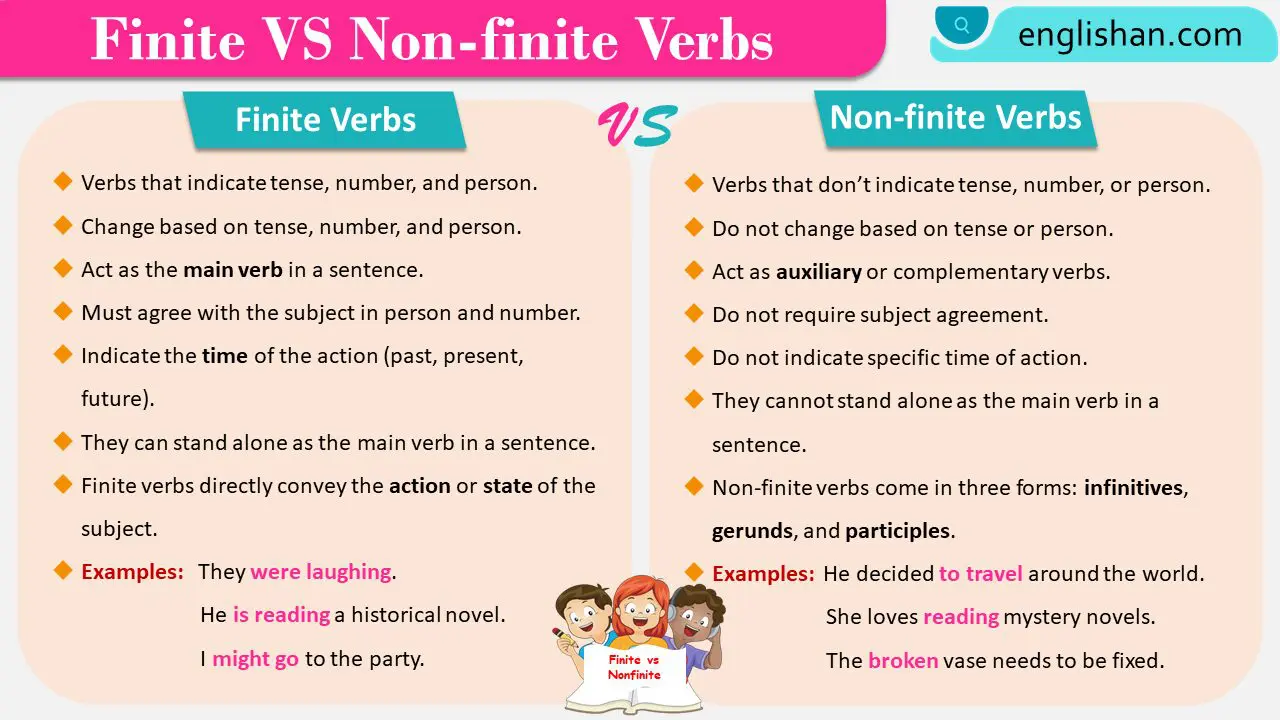
FAQs
Finite verbs are action words that change based on the subject and tense. Here are 10 examples:
He runs every day.
They played soccer yesterday.
She eats lunch at noon.
We are happy to help.
The dog barks loudly.
I read books often.
She writes letters.
He cooked dinner last night.
They will go tomorrow.
I am excited for the trip.
Non-finite verbs don’t change based on the subject or tense; they often appear as infinitives, gerunds, or participles.
Here are 10 simple examples:
To eat well is key to health.
She likes to swim every morning.
I need to write my homework.
Eating fruits helps you stay healthy.
Swimming improves fitness.
Writing daily sharpens the mind.
The cake was eaten quickly.
This story was written by her.
He enjoys going for walks.
She was already gone by noon.
You May Also Like

